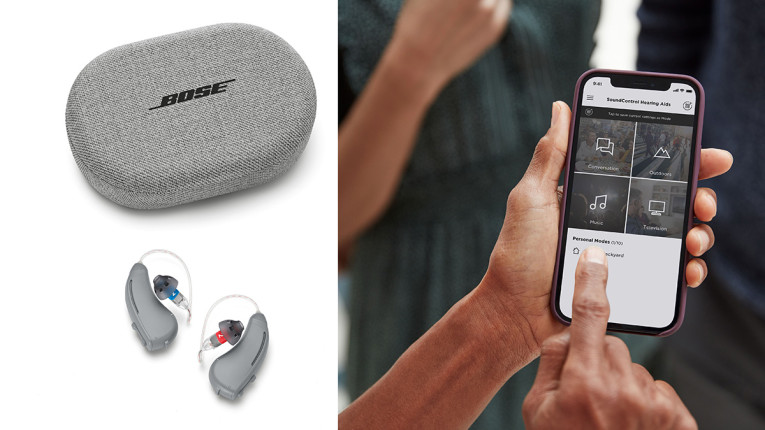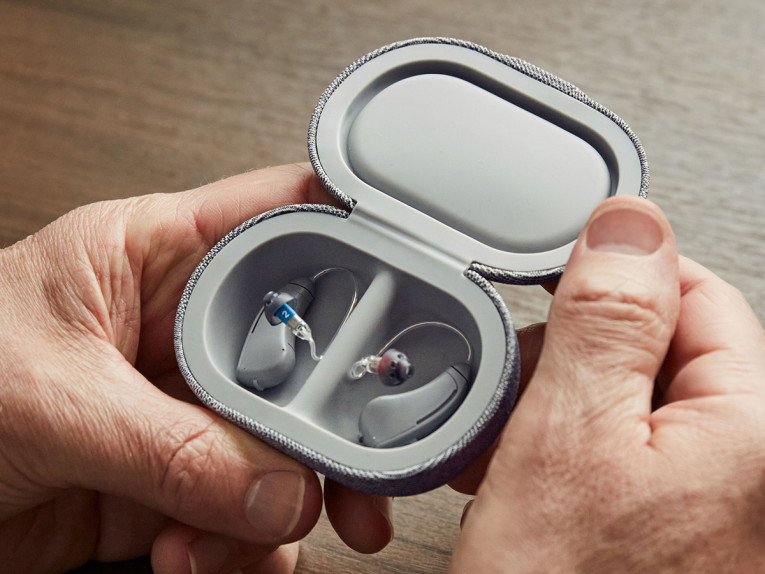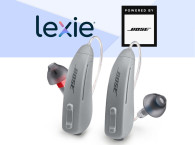
In October 2018, the US Food and Drug Administration (FDA) allowed marketing of a new device, the Bose Hearing Aid, intended to amplify sounds for individuals 18 years or older with perceived mild to moderate hearing impairment (hearing loss). This was the first announcement of an hearing aid authorized for marketing by the FDA that enabled users to fit, program and control the hearing aid on their own, without assistance from a health care provider.
Since then, the audiology industry accelerated a convergence of traditional hearing aid devices with more widely accepted true wireless earbuds, introducing Bluetooth streaming and many of the hearing enhancement features of consumer products into actual medically prescribed (and tuned) devices. On the other side of the equation, Nuheara and Alango (Wear & Hear) have proposed affordable hearing-assistance devices that fit the needs of a much larger percentage of the population with mild hearing loss.
With the announcement of the new SoundControl Hearing Aids, as a direct-to-consumer hearing aid design, developed for adults with perceived mild to moderate hearing loss, Bose becomes the first consumer electronics company to directly defy the hearing aid companies in their backyard, by marketing a product that actually looks like a hearing-aid.

Of course, there are differences in the approach. The SoundControl hearing aids are supposed to be paired with the dedicated Bose Hear app (iOS and Android), where users can fit, program, and control their devices for “clinically proven, audiologist-quality results — without a doctor visit, hearing test, or prescription,” as Bose describes. And users can make setting adjustments themselves, in real-time and real-world environments, without assistance from a healthcare professional.
To support the concept, the Bose SoundControl Hearing Aids come with a 90-day risk-free trial, and dedicated product support. The Bose Hear app also offers dedicated support, and users can even schedule one-on-one video appointments with Bose Hear Product Experts to get personalized help and guidance — at no cost. As Bose states, the solution is available “at a fraction of the cost of most conventional hearing aids,” which normally would cost thousands of dollars. The SoundControl Hearing Aids are eligible for FSA and HSA reimbursement, and they will be sold directly from Bose for $849.95 - starting May 18 in five states: Massachusetts, Montana, North Carolina, South Carolina, and Texas — with nationwide availability to follow.
“In the United States alone, approximately 48 million people suffer from some degree of hearing loss that interferes with their life. But the cost and complexity of treatment have become major barriers to getting help,” says Brian Maguire, category director of Bose Hear. “The Bose Hear app lets owners set up and customize their SoundControl Hearing Aids from home — in less than an hour — to reconnect with the moments that matter. That’s an amazing advancement the industry has been missing and nothing short of a breakthrough.”

Detailing the effort, Bose explains in the announcement that the SoundControl Hearing Aids were developed internally by a team of Bose scientists, audiologists, and engineers. The design was optimized, conceptualized, developed, and tested solely to improve hearing and deliberately does not stream music or calls - avoiding the much discussed crossover that all sides of the industry are pursuing.
The Bose development was conducted in combination with a clinical study with researchers at Northwestern University to test the Bose CustomTune technology. The study “yielded results that were as good if not better than those achieved by traditional prescription-fitting methods used by audiologists. The study’s participants were split into two groups with similar levels of hearing loss. One group used Bose CustomTune technology to self-tune a device, the other had the same device fit and tuned by an audiologist. Participants using Bose CustomTune technology reported being more satisfied with their sound quality than those whose devices were tuned by a hearing health professional,” the Bose announcement details.
The reasoning is that the SoundControl should actually be perceived as great hearing aids as such. “With its proprietary technology, speech that once sounded mumbled — especially consonant sounds — is clearer; children’s voices and softer voices are better heard and understood; and following and joining conversations is easier, even in noisy environments,” Bose explains.
To achieve these goals, Bose perfected its CustomTune technology, which the company describes as “an advancement so significant it redefines hearing aids entirely.” The technology is integrated in the Bose Hear app so users can personalize their settings in about 30 minutes — a seismic shift from the process required for conventional hearing aids. And it offers hundreds of options for fine-tuning from just two simple controls: World Volume can be turned up to amplify quiet sounds more than loud ones so listening is more comfortable, while Treble/Bass can adjust tone to accentuate or diminish certain vocal frequencies. “Using Treble, what’s heard is crisper and brighter; using Bass modifies richness and depth,” the company describes to illustrate the simplicity of language chosen and the approach.

To help with communication or specific surroundings — whether outside or inside — there’s also a Focus feature. Users can choose the Front setting to zone in on conversations — ideal in a busy environment. Or they can select the Everywhere setting to hear sounds all around — ideal for walks, working around the house, or a day at the park. Presets for activities and places can be named and stored in Modes, providing effortless access to preferences for a favorite restaurant, dinner at home with the family, or watching a movie together.
Choosing eartips is equally straightforward. SoundControl Hearing Aids come with three sizes, both open and closed dome. Finding the right fit and design is done with the app’s step-by-step guide and plain-language tutorials.
Bose opted for a very traditional behind-the-ear, receiver-in-canal design. Each device weighs 3 grams and contains two microphones, one tiny speaker, and a standard 312 zinc-air battery - like hearing-aids traditionally do - no innovation on daily rechargeable batteries like TWS products. And it doesn’t solve the sustainability issue at all. The included eight batteries last up to four days each one when used 14 hours daily. “They can be replaced wherever hearing aid batteries are sold and easily changed via a durable door on the exterior,” Bose explains.
The design also includes a World Volume button integrated on the housing for quick control. For added protection, the SoundControl Hearing Aids are water-resistant to survive light exposure to rain or water and come with a small case for storage and transport only.
www.bose.com








